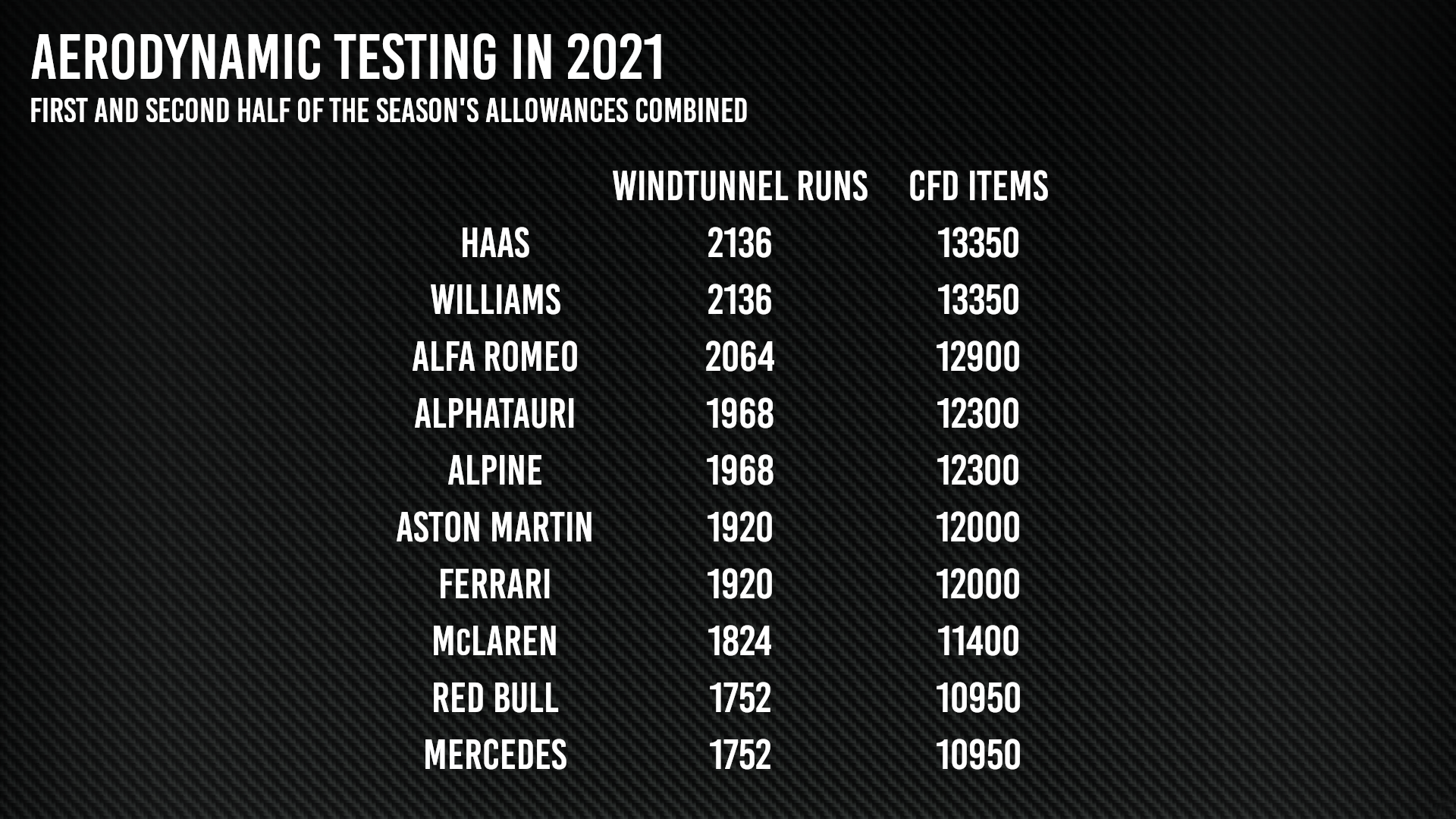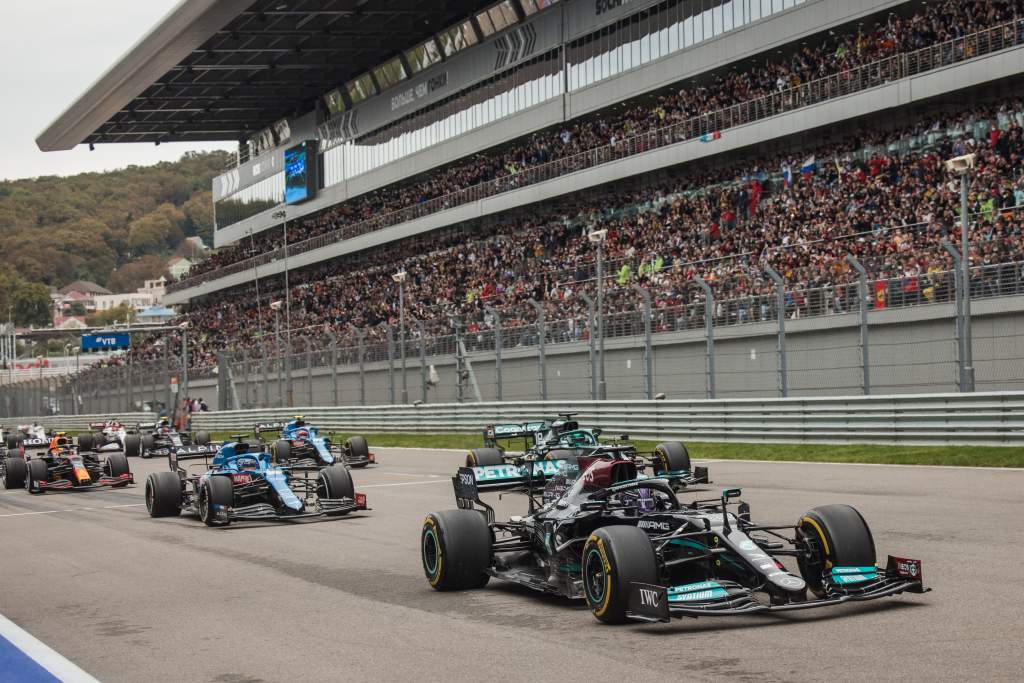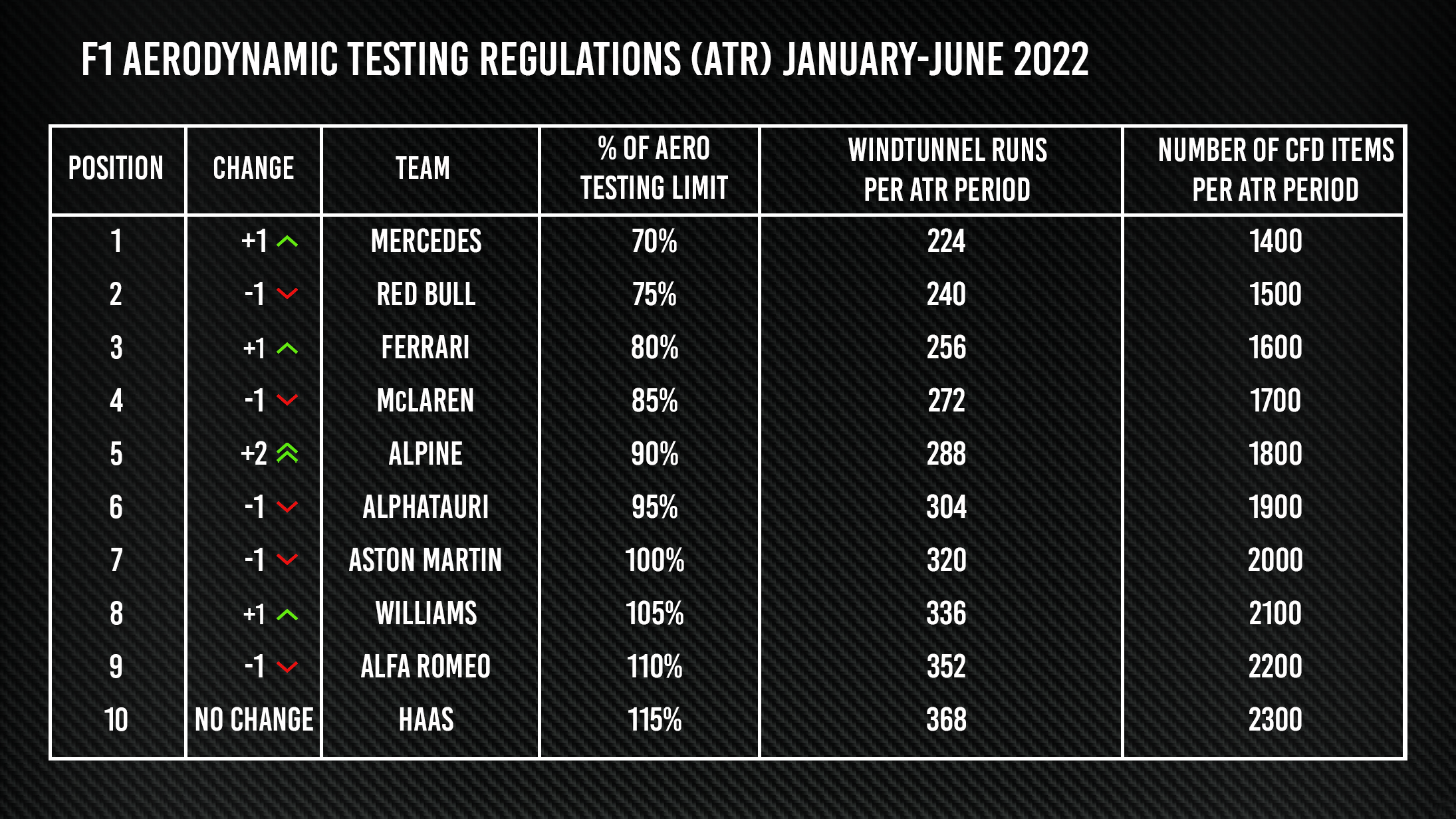Up Next

Formula 1 teams have been developing their cars for the 2022 rules overhaul with different aerodynamic testing restrictions (ATR) and this year these allowances have become bigger in between.
The ATR rules allocate windtunnel runs and CFD items and as of 2021 are adjusted based on constructors’ championship positions, with the worst-performing teams having the most development opportunity.
These allowances are based on the championship standings at two points: the end of the previous season and June 30 of the current season.
So, for example, last year Mercedes started last season with the toughest restrictions because it won the 2020 constructors’ championship.
But over the course of 2021, it had the same amount as Red Bull because Red Bull led the constructors’ championship on June 30.
This means that they each had six months of the minimum allocation, amounting to 1,752 windtunnel runs and 10,950 CFD items.

Conversely, Ferrari’s recent underachievement put it in a good position to maximise development for its 2022 car.
Ferrari’s poor 2020 season, when it finished sixth, and its fourth position at the halfway point of 2021 meant it was able to spend more time in the windtunnel and do more CFD work than Mercedes, Red Bull and McLaren over the whole of 2021.
This amounted to 168 more windtunnel runs than Mercedes and Red Bull, and 1050 more CFD items, over the year.
And we can be sure this advantage will have been put to use almost exclusively on the 2022 project, giving it a useful headstart even though it will have a reduced allowance this year after finishing third in the 2021 standings.
Haas and Williams had the joint-largest ATR allowance in 2021 – 2,136 windtunnel runs and 13,350 CFD items – because they swapped last position in the championship from the end of 2020 to mid-2021.
Of course, the likes of Mercedes and Red Bull will still have an advantage on at least some of their rivals in terms of the way they use their aerodynamics testing resources.
But the 2022 car will be the first they have designed under these conditions.
And the difference in the ATR allowances becomes bigger this year, with a 5% increment between teams – in 2021, the sliding scale was based on 2.5% increments.
Total windtunnel runs and CFD items by team based on allowances permitted for the first half of 2022. “Change” denotes shift in position from the previous reference point on June 30, 2021
That means that Mercedes, as the 2022 constructors’ champion, has 70% of the maximum and Red Bull 75% of what’s allowed in each ATR period – of which there are three in each half of the year, and range from 8-10 weeks in duration.
So, having had to start designing and developing their cars with reduced resources compared to what they have historically been used to and with less aerodynamic testing compared to rivals, their disadvantage is intensified for the first half of 2022.
This means if either or both start the season slowly, they are also limited in terms of aerodynamic testing as they attempt to recover – until the allocations are reset at the start of July.
As the 2022 cars are a clean-sheet-of-paper design with very limited parts carryover, requiring a very different philosophy given the return of the ground effect venturi tunnels on each side of the car, this is a huge test of the capabilities of Red Bull and Mercedes.
At the other end of the scale, Haas’s decision to sacrifice 2021 and finish a distant last in the championship is rewarded with more aerodynamic testing than anybody.
Thanks to the increased increments this year, that means Haas starts 2022 with 144 more windtunnel runs and 900 more CFD items permitted than Mercedes.







